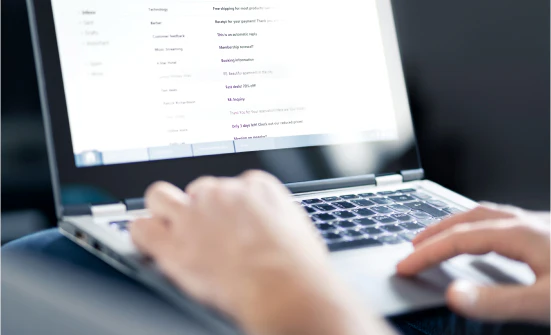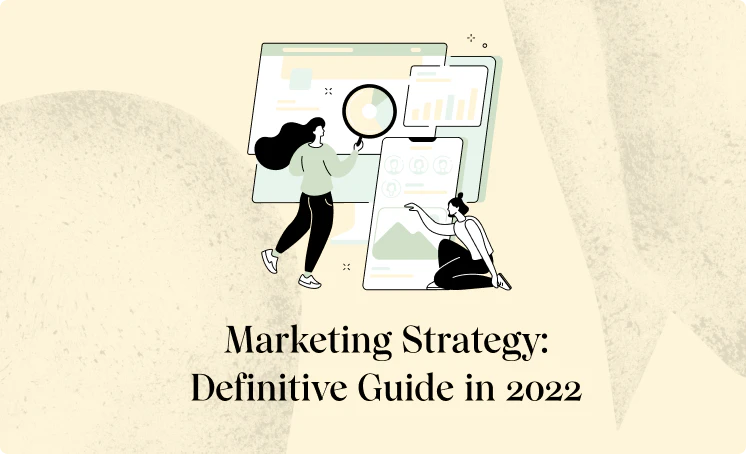Introduction
Email marketers spend hours and hours developing a strategy to get subscribers, segmenting them, and coming up with ideas to send… and then the emails fall flat.If this sounds familiar to you, it’s time to sharpen your email copywriting skills.
This article gives you actionable tips you can use next time you get ready to send an email.
What’s Email Copywriting?
Email copywriting is the research, development, writing, and editing of the copy in your emails.
Copywriting is much more than thinking up a topic and putting words on a page, and if you’ve been treating it that way, you’ve been missing an opportunity.
Email copy can take different forms depending on the purpose of your email, but no matter what, every line of copy needs to earn its place in an email.
Three Pieces to Powerful Emails
Before you write any email copy, you need to understand the three pieces to create powerful emails.
Know Your Target Audience
Writing anything without knowing your target audience is going to give you subpar results. With all of the research and tools available, there is no excuse for not knowing your target audience.
If you are writing to an existing base of subscribers, your ESP can provide you additional insights into the types of emails your audience responds to. Don’t ignore the data available to you.
Write Subject Lines that Capture Attention
Once you know your audience, it’s time to figure out what will make them go, “I need to read this now.”
The most likely subject they care about? Their own desires.
How is what they are about to read going to make them wealthy or healthy or whatever other goals they have?
Get them curious about what the body of the email contains that could take them from where they are to where (or what) they want.
Craft Body Copy With a Goal
Now that you’ve set the tone of the email in the subject line, it’s time to continue creating interest and desire.
The body copy is where you show them that you understand what they want and drive them to take action.
Set your end goal before writing anything, and make sure all of your copy fuels it. We’ll cover ways to do that briefly.
Inbound vs Outbound Email Copywriting
Email copywriting isn’t used for your standard office email. It’s used for marketing and sales emails.
You either use email copywriting to try to build a relationship and nurture a lead that came to you through inbound marketing, or you use email copywriting to reach out to potential leads through outbound marketing.
But email copywriting for inbound vs outbound marketing has a few distinct differences.
Email Copywriting for Inbound Marketing
Inbound marketing has had a major push in recent years for a good reason. It brings the customers who are looking for your solution to you naturally, making the process more comfortable for both parties.
Email for long-term relationship building.
When someone trusts your brand enough to share their email, the last thing you want to do is change their mind by spamming them.
You want to use your emails as an opportunity to build a relationship with your customers and leads. They saw something that they liked to sign up, and now you want to give them more of that over time.
Long-term engagement typically means higher lifetime value for your brand. You don’t want to throw that away with shoddy emails.
Make your subject line do a job.
Your subject line is your email’s headline, and its job is to make your reader want more.
With inbound marketing, you know your readers find value in what you offer, or they wouldn’t be on your list. Use that information in your subject lines. Think about your products and offers and what your customers are trying to get from them.
For instance, if you sell sustainably made footwear, you could try a subject line like “These will make you look AND feel good.”
This hits on your audience’s desire to do good with the clothing they buy without giving too much away about what’s inside the email. Is it a new product? A discount? They will have to open it to find out.
Build strategic email sequences by making your emails work together.

No emails used for marketing copy should be created in a bubble. Whether you realize it or not, every email is being added to the foundation of all the emails that subscriber has read from you before that.
You have to be consistent in the way you present your brand and products within every email you send.
You might find it helpful to develop a handful of topics you use in your emails to keep common themes your readers can count on. Planning out emails in advance can also help you create a strategic email sequence that builds on itself for better results.
Email Copywriting for Outbound Marketing
Inbound email copywriting is about providing your readers more of what they ask for, but outbound marketing is reaching out to people who might not know you exist. The rules change for outbound marketing.
Not to mention, outbound emails are going to be 1-to-1 versus 1-to-many, so they need to be hyper-personalized.
Make your subject line valuable.
Your subject lines with outbound marketing need to do more than make your reader curious. It should tell them the value of the email upfront.
Assuming your using outbound email marketing for lead generation, the person you are emailing probably gets unsolicited emails all the time. They are savvy to techniques used to encourage an open.
Instead, tell them why it’s worth their time to find out more. What is inside the benefits them right now?
Improve your response rates by doing the research.
So, you got them to open the email, and now you need to make them see they made the right choice.
The body of your email needs to be personalized to the reader as much as possible. Templated mass outreach will get you a meager response rate. Effective email copywriting requires you to know who you are writing to.
Say you are trying to get the reader to sign up for a demo of your SaaS product that helps them manage their employees. The reader will be more inclined to take action if you know how many employees they currently have and how many new hires they add a quarter so you can help them break down the cost per employee in the email.
When you show initiative, people appreciate it and pay more attention.
Nail your follow-up emails with memorable content.
Initial outbound marketing emails, even with great copywriting, very often go unanswered.
Sometimes the person just doesn’t need what you are offering, or they don’t know they need it yet, so they don’t respond. They could also have been semi-interested but then got distracted.
It’s wise to follow up to show you haven’t forgotten about them.
The critical piece of follow-ups is to be careful not to damage the relationship for the future. When you are crafting your email, you want to be understanding and friendly. You want to keep the door open for them to reach out if they discover your offer is precisely what they need in a few months.
Email Copywriting Facts to Keep in Mind
You should keep in mind a few things about email marketing to help you make the most of your emails moving forward.
- Email marketing has a higher ROI (up to $44 per $1 spent) than other types of marketing.
- Subject lines get your email opened. You need to master subject lines first.
- Email marketing should provide value, not just push sales.
- Email opens up the door to build a long-term relationship with your leads. Don’t waste it.
- Email copywriting is one skill that can change your business if done right.
If you find yourself struggling with email marketing, remind yourself of these five things and keep pushing forward.
27 Email Copywriting Tips You Should Follow in 2022
When it comes time to write your email copy, it can help to have a quick list of tips you can run through. We’ve compiled 27 of the best actionable email copywriting tips to help you get started.
Figure out who you are writing to and what about first.
Don’t write one word of your email until you’ve established who you are writing to and what you are writing about.
Audience first, topic second.
After you’ve established who your reader will be, it will be easier to develop the topic, content, strategy, and goal.
If you are an ecommerce brand running a flash sale, you may only want to send a specific email to customers who have purchased in the past 60 days, for instance. With that information in mind, you can create copy that lets them feel exclusive because only they are getting this email.
Get personal with your readers.

Speaking of knowing who you are writing to, don’t be afraid to get a little personal with your readers.
Let them know who you are and that you’re paying attention to them. Use your copy to let them know they are a valued part of your business and your emails are going to be useful to them.
Personalize your emails to your reader.
Most ESPs let you add personalization to your emails to help capture your reader’s attention.
The most common use of this is by adding the reader’s name in the introduction or the body copy, but you can do better than that.
You can segment your list to include data like professional titles if you’re writing B2B emails. Or an ecommerce brand could send helpful product guides for the item they recently purchased.
Make your emails relatable.
No one wants to communicate with a person or brand that they don’t relate to. People like to feel that we’re in it together.
Your email copy should promote that feeling.
You can make your emails more relatable by letting the reader know that you understand what they are looking for based on some life experience or interest you share (i.e., your product’s benefit).
If you can’t find anything to relate to, you may be speaking to the wrong audience.
Show your personality.
Your email copywriting should show your personality. You may be thinking that your industry is too formal, but personality doesn’t mean unprofessional.
The best show of personality often comes in the form of insider terminology or everyday shared experiences.
Your personality adds a human element to your emails that your reader craves among all of the mass advertising and cold emails.
Don’t think if you are a product business you can’t have personality. In the email below, Radio Flyer leans on the fact that they’re a brand with a long history with the “retro” copy.

Highlight the benefits of your product.
Don’t forget to talk about the primary reason behind your emails: your product.
But don’t list out your product features and expect your readers to figure out the benefits on their own.
You need to highlight the ownership benefits of your product that make the reader feel like they are losing out by not having it. Or if they are already customers, make them want more of it.
Use a promise in your subject line.
There are a handful of ways you can create a subject line that gets opens. One of them is making the reader a “promise” in your subject line that you can deliver in your email copy.
The word “promise” is being used here, but you have to be careful to make actual promises in your marketing.
Your subject line should create an implied promise of what is inside. If this was sent out in an email, the subject line could be “27 copywriting tips to transform your emails.” It is straightforward and tells the reader exactly what’s inside.
Let your subject line create curiosity.
On the other side of the subject line techniques is the curiosity hook. Instead of coming right out and telling the reader what’s inside, you just give a teaser.
The teaser subject line is an excellent way to start sales or event emails.
People don’t love to be hard-sold, so if your subject line is overtly sales-based, it may be overlooked. If you instead give a hint that there’s an offer without telling what it is, the reader may be tempted to at least want to learn what the offer is from fear of missing out.
Ask a question in the subject.
The final subject line type is to test asking a question in your subject line.
Your question should frame the outcome the email can help your reader achieve.
If you are using a question subject line, you should test including the reader’s first name at the beginning or end to make it feel directed to individuals, prompting them to be inclined to answer.
Be concise with email copy.

Email is not the place to get into long-form copy. Your readers receive too many emails to have 2,000 words to read each time they hear from you.
You want to make your email copy concise. If the reader is interested in finding out more, that is what your CTA is for.
Only one main idea per paragraph.
In the spirit of keeping your writing concise, you want to stick to short paragraphs.
Trying to cram too much information into a small amount of copy can get confusing quickly. You want only one idea in each to help keep your reader’s journey organized and moving along.
When you are editing your emails, watch for instances of drifting to the next idea too soon.
Write emails in the second person.
Don’t make your emails about you; make your emails about them.
The word “you” should be used generously throughout your email copy. Try to remove as many first- and third-person phrases as possible.
Make your writing clear and direct.
Email copy is not a place to get fancy. You want your email copy to read like it was coming from someone the reader knows well.
When we speak to people we are comfortable with; we aren’t overly formal. Your writing should use language that’s easy to understand and is direct. You don’t want to leave your reader wondering what the point of the email was.
Deliver on your email “promises.”
We talked about using your subject lines to set up a “promise” for your email, but you can also use them in your copy to encourage your reader to click.
If you use this technique, you must fulfill your promise to the reader or risk losing their trust going forward.
It’s really the golden rule of marketing in general. Don’t make claims you can’t back up.
Give your audience what they want.
Learning to write email copy is useless if you don’t know what your audience wants.
You shouldn’t assume that they want what you want. You should find out first hand. Set up a thank you page survey asking what made your reader sign up. Find out what they are struggling with. Learn what outcome they are hoping to get.
Use power words in your copy.
Some words and phrases hold more power than others. You want to use them strategically in your email copy.
Most people know words like “free” and “exclusive,” but they are often overused. There is a whole host of other power words to choose from that will help capture your reader. Check out this list for ideas.
Always be relevant.
Developing a value proposition for your email marketing does more than just tell your readers why they should sign up. The value proposition acts as your north star for what to send.
If you're writing an email and the topic doesn’t have an obvious connection to the value you promised your readers, scrap it.
Make every word in your copy work.
Ruthless editing is the difference between meh and great copy.
Write a draft of your copy, then come back and edit. First for grammar and clarity, then for necessity. Take out anything repetitive or potentially confusing.
Use psychology and persuasion.

Understanding when and how to use psychology and persuasion is a big part of copywriting.
The word persuasion can get a bad rap, but persuasion is part of life and business. It’s all about how you use it.
Authority and social proof are two major forms of persuasion that are both honest and helpful. By sharing your authority in your industry and confirming it through other similar users that are happy with their outcomes, you are helping to persuade your readers that are actively looking for a solution to choose you.
Share background with your readers, so they trust you.
We have all been trained to be cautious of anything that seems too perfect. When you only share the upside with your readers, they start to question your authenticity.
Don’t be afraid to share the not-so-pretty backstory of your service or product. Tell of how it came to be. Share business struggles you had to overcome.
Use stories to engage.
People like to be entertained while they learn. Stories are a great way to both teach and build connections.
This is especially true if it’s a story your readers can relate to.
One of the more popular stories used in email marketing is the hero’s journey, or how you (or a customer) went from being in the same place as the reader to where they want to be.
Reward your readers.
The best way to keep readers opening your emails is to reward them for their time.
Send them incentives or discounts that aren’t available to anyone else. Or give them early access to new content or offers.
Find a way to make opening your emails a small gift to your readers.
Avoid using words that might trigger the spam filter.

Most people Email services have identified specific words that will send an email straight to the spam folder. Every email service is different, but there are some universal words that are more likely to trigger the filter. Hubspot has a comprehensive list you can use to get started.
Think through your CTA and link copy.
Calls to action are the other short piece of copy that shouldn’t be added thoughtlessly.
Don’t simply write “learn more” on your button and expect your readers to want to click. Instead, add the benefit they get from clicking within the copy.
Email calls to action can come as either buttons or links within the copy. Try both and see which gets clicked more. Try them at the beginning, middle, and end. Give your readers plenty of opportunities.
Encourage action.
Your readers might need a little extra push to take action. You can help them by reducing anxiety around your CTAs.
Things that imply real urgency or scarcity can help make your reader take action. Anything that makes them fear they are missing out on something important.
The critical piece is that you only use these when there is an actual urgent need. Otherwise, you lose trust.
A/B test your emails.
A/B testing is the tried and true way to learn what works and what doesn’t. It removes all other factors to get your definitive results.
Start by testing your subject lines first. Then move to CTAs. Then test the types of copy you use in your emails, like storytelling.
Iterate and optimize.
Your split test results will help you better understand what your customers respond to so you can develop frameworks for your copy.
Frameworks you can pull from for your subject lines and body copy will help you stay on track with your future emails.
How to Create a Shortcut to Writing Emails
Copywriting is a skill that takes time and effort to develop.
Luckily, you can learn from others who have already developed the skill.
Follow this quick, simple process to learn email copywriting.
1. Go sign up to as many email lists as you can (start with emails from others in your industry, both competitors and complementary businesses).
2. Create a “swipe file” of emails that make you take action.
3. Evaluate what it was about the email. Was it a persuasion technique or backstory about the product? Organize your swipe file by technique.
4. When it’s time to write, choose the technique you think fits the topic best, and check your swipe file for inspiration.
Of course, you never want to copy what another business has done, but it can be beneficial to have examples to spark your own ideas. Many successful copywriters use swipe files when they are starting for when they feel stuck.
You may decide that you don’t want to learn email copywriting and would rather collaborate with established experts. If you want help crafting emails that work, we can create a custom email marketing strategy that handles everything, including setup, copywriting, design, and optimization.
Final Thoughts
Every business – no exceptions – should take the time to improve its email copywriting.
Whether you are sending marketing emails to subscribers who asked to hear from you or prospecting new customers, better email copy is more likely to win them over.
Put these tips to the test and stop wasting resources by sending poorly written emails that don’t work.














.webp)

.webp)








.webp)









































.webp)






